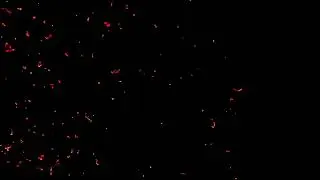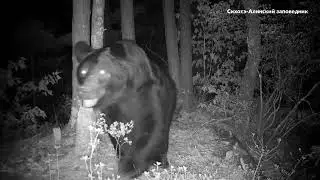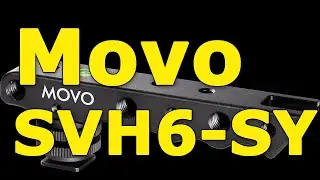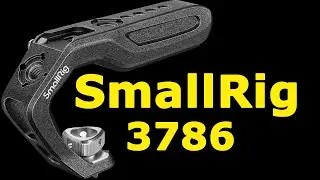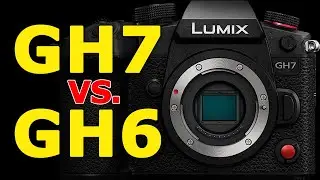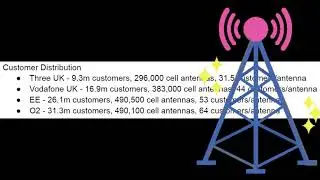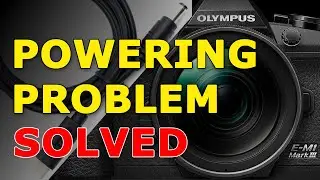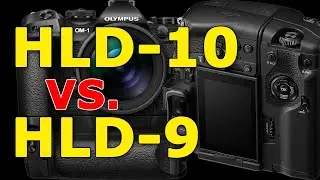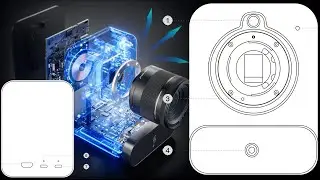Canon 50D Review in 2021 and Tutorial
Canon EOS 50D Review, in depth details guide of specs and tutorial including using Live View Mode with depth of field preview button on this Canon APS-C sensor DSLR camera. For more videos about Canon 50D features, tutorials and peripherals, see the following playlist: • Canon EOS 50D
00:00 Physical features
00:29 Built-in Flash
01:03 Battery BP-511A
01:17 Battery Grip BG-E2N
01:32 Charger CB-5L
01:49 Storage/Compact Flash memory card
02:16 Connectivity/Ports
03:46 ViewFinder
04:08 LCD Screen
04:23 Top LCD Panel
04:58 Sensor APS-C
05:13 Lens Mount EF/EF-S
06:01 Stabilization
06:21 Autofocus
08:54 Shutter
10:18 ISO
10:43 RAW/JPEG
11:36 DOF preview
12:59 A-DEP
14:27 Menu options
16:18 Live View Mode
17:29 Live View Focus modes
20:47 Some points
21:53 Video Features / Magic Lantern
24:15 Canon 50D vs 60D vs 7D
26:19 Any questions?
Canon EOS 50D was released in October 2008 and supports Canon EF and EF-S Lenses. You can use any Canon full frame EF lenses. Combination of EF lens on Canon camera with an APS-C sensor will produce high quality results particularly for macro-photography.
Canon BG-E2N Battery Grip: • Canon BG-E2N Battery Grip & BGM-E2 fo...
DEPTH OF FIELD PREVIEW BUTTON
DoF preview button allows you to see a preview of depth of field of your framing when pressed down while looking through viewfinder or on LCD screen, otherwise depth of field which is shown in viewfinder is always largest aperture of your lens which is lowest F stop number. On my lens largest aperture is F2.8 which is shown in viewfinder even if I have set aperture to F11 on camera. When I hold down depth of field preview button, aperture will change to F11 on lens to match setting on camera, and I will be able to see a preview of DOF in viewfinder or LCD. Once I let go of DOF preview button the camera will change lens aperture back to largest opening i.e. F2.8 and that’s the level of depth of field that I see in viewfinder even though my setting is F11.
A-DEP Automatic Depth-Of-Field
camera has a dedicated mode for automatic depth of field on mode dial.
In this mode camera analyzes what is in frame and automatically selects a number of focus points based on what camera algorithm identifies as subjects to ensure those subjects are in focus. algorithm favours three types of subjects: subjects that are close to camera, subjects that have texture and contrast, subjects that have bright colours
Once camera automatically detects subjects in frame, in order to ensure all subjects are in focus it automatically sets the aperture F-stop to make sure right depth of field chosen, so subjects in both foreground & background are in focus.
You can control ISO setting when in this mode, or you can set ISO setting to automatic so that camera controls ISO setting in addition to aperture and shutter speed.
LIVE VIEW MODE
In Live View mode mirror is locked up and LCD can be used to compose picture, or use Canon EOS utility software to control camera remotely from computer. Taking pictures remotely from a computer, you can see a larger framing of scene as well as not handling camera means less camera shake.
Before using Live View mode, you have to make sure that menu option for “Live View Shooting” is set to “Enable”.
To obtain focus in Live View mode, there is a focus box which can be moved around using joystick to achieve focus on desired part of scene. Live View mode has three auto-focus modes: Quick mode which uses Phase Detect auto-focus, Live mode which uses a Contrast Detect auto-focus, and Live mode with face detection which uses Contrast Detect auto-focus with face detection.
Using Live mode auto-focus, you can move focus box to subject using joystick and once focus box is on your subject you press and hold auto-focus button until auto focus box turns green.
Live mode face detection is able to recognise multiple faces and camera draws a box around one single face with arrows to indicate that focus can be moved to other faces.
You can use depth of field preview button in live view mode to check DOF prior to taking photo.
50D vs 60D vs. 7D
Both 50D and 7D were highest end Canon cameras which used an APS-C sensor size at time of release. Both use Compact Flash cards whereas 60D uses SD cards, which makes it more inconvenient to upgrade from 50D to 60D. Canon 60D has a different battery to 50D and 7D which again makes it a less likely choice for an upgrade path from 50D. Both Canon 50D and 7D are constructed from metal, sporting a magnesium alloy body whereas 60D has a plastic body on an aluminum chassis. Canon 50D uses same battery grip as 20D, 30D, and 40D. When shooting photos, 60D can take less frames per second than 50D. Release price of Canon 60D was less than 50D.
For more Canon 50D videos, tutorials and peripherals, see playlist: • Canon EOS 50D

